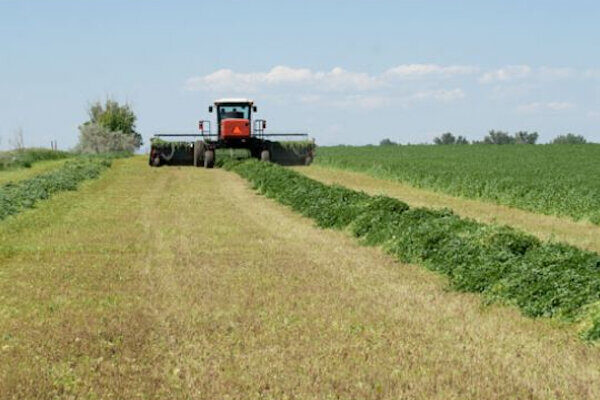First Cutting: Resources for success in 2022
First cutting of a perennial hay crop offers the opportunity to capture high quantity and quality, but timely harvest can be met with a number of obstacles. This fact sheet provides links to several current resources to aid in successful decision making for the upcoming season.
Have a safety plan
The spring season on the farm is exciting, but also very busy, increasing the chances for accidents. Work with your harvest team to identify and mitigate potential hazards and maintain balance between the critical time demands of this work and adequate breaks.
Managing forage digestibility to combat high commodity prices
The optimum percent forage in the diet will vary slightly based on individual farm resources; however, regardless of what the optimum percent forage is for your farm, higher inclusion rates of forage in the diet are linked to improved income over feed cost. Maintaining high levels of forage in the diet requires high forage quality. Optimizing the timing of first cutting is a significant opportunity to manage forage digestibility to optimize forage use in the diet and combat high commodity prices.
First cut timing and impact on subsequent cuttings
Timely harvest optimizes yield and quality while also removing the crop at a time when soil moisture and rainfall is often still more prevalent, which is very beneficial to get regrowth off to a strong start. Late harvest of first cutting sacrifices quality while also increasing the risk that a lack of soil moisture and lower rainfall will significantly hinder regrowth performance.
Implement the harvest plan
Success culminates with putting planning into action when the crop tells you it is time to harvest. It is critical to be prepared to harvest at the optimum timing even when that means parking the corn planter or putting other tasks on the back burner for a few days.
Prioritize securing lactating cow quality forages with dynamic harvest scheduling and store it by quality to assure it is available to feed to the targeted animal group at the targeted time. Once adequate inventories of lactating quality forage is secured, attention can turn to forages for non-lactating animals.
Harvest operations also have the potential to impact yield, quality and crop performance. While alfalfa can technically be cut lower, a three to four inch cutting height is preferred for legumes while four inches is strongly encouraged for grasses. Cutting grasses lower than this can stunt regrowth and introduce the potential for greater soil contamination.
Utilize wide swathing techniques and focus on proper setup of all field equipment to minimize losses from respiration in the windrow and high value leaf material from mechanical injury.
Attention to the proper setup and operation of mowers, rakes, mergers and harvester pickup heads can have meaningful impacts on ash content (soil contamination). Work with equipment representatives and agronomic advisors to assure proper equipment setup.
Manage storage to minimize losses
Forage shrink losses can have a significant impact on both the quantity of forage available as well as the quality and palatability of that forage. Further, forage shrink costs more when input cost are high, which heightens the importance of this already important stage on the forage process.



